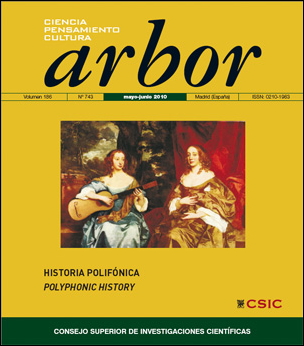The numerical treatment of the reality. Thoughts about the nowadays importance of the statistics in the information society
DOI:
https://doi.org/10.3989/arbor.2010.743n1213Keywords:
Statistic, information society, mathematics, uncertanty, scienceAbstract
The statistic has become an effective method to accurately describe the data values in economic, political, social, psychological, medical, biological and physical as a tool to correlate and analyze data. The statistical work is not only to obtain, collect or tabulate the data, but on the whole process of interpreting that information alone or with other specialists. Nowadays is impossible to understand the Information Society without statistical concern is the current status of mathematics and specifically of statistics and their subsequent translation into society because of its indispensability despite a lack of vocation among young people study and use, either by its mathematical difficulty, ignorance or other reasons. This article aims to reflect on the importance of it in today’s society that makes it good numerical reality.
Downloads
References
ANECA (Agencia Nacional de Evaluación de la Calidad y Acreditación) (2009): Título de grado en estadística (disponible en: http://www.aneca.es/media/150324/libroblanco_estadistica_def.pdf).
Bernabeu-Mestre, J. (2007): “Estadística y salud pública: el argumento del método numérico”, Gac Sanit (21) 5
Mahalanobis, P. C. (1954): ”The foundations of Statistics”, Dialectica, 8, 95-11. doi:10.1111/j.1746-8361.1954.tb01124.x
Monleón, T., Barnadas, A., Roset, M. (2005): Metodología de investigación y estadística en oncología y hematología, Módulo 5, p. 6-26. ISBN: B-40.747.2005. Ed Edimac Barcelona.
Monleón-Getino, Toni; Barnadas-Molins, Agustí y Roset-Gamisans, Montserrat: “Diseños secuenciales y análisis intermedio en la investigación clínica: tamaño versus dificultad“, Medicina Clínica, 2008; 132 (11): 437-442. doi:10.1016/j.medcli.2008.06.011
PMid:19268995
Newman, J. R. (1962): ¿Qué es la ciencia?. Difución científica, Aguilar, Madrid, pp. 52-53.
Rao, C. R. (1989): Statistics and Truth, Council of Statistics and I Research, New Delhi.
Rubio de Juan, M. A. (2002): Lección Inaugural: Estadística, Certeza e Incertidumbre, Lección inaugural del curso académico 2001/2002 de la Universidad de Extremadura.
Salinas, P. J.: La estadística: disforia en ciencias de la salud, MedULA (16) 2.
Sanchez de Cos (2007): La trastienda de la estadística. De todo un poco, blog electrónico, disponible en: http://ernestosdc.wordpress.com/category/estadistica/.
Tanur, J. M., Mosteller, F., et al. Eds. (1992). La Estadística: Una guía de lo desconocido. Alianza. Madrid.
Wikipedia (2009a): La estadística, disponible en: http://es.wikipedia.org/wiki/ Estad%C3%ADstica.
Wikipedia (2009b): Aleatoriedad, disponible en: http://es.wikipedia.org/wiki/ Aleatoriedad.
Zamora-Bonilla (2004): ¿Hay una “crisis de vocaciones” científico-técnicas? El tránsito de la enseñanza secundaria a la universidad, FECYT (disponible on-line en: http://abordodelottoneurath.blogspot.com/2009/06/la-crisis-de-vocaciones-cientificasun.html).
Downloads
Published
How to Cite
Issue
Section
License
Copyright (c) 2010 Consejo Superior de Investigaciones Científicas (CSIC)

This work is licensed under a Creative Commons Attribution 4.0 International License.
© CSIC. Manuscripts published in both the printed and online versions of this Journal are the property of Consejo Superior de Investigaciones Científicas, and quoting this source is a requirement for any partial or full reproduction.
All contents of this electronic edition, except where otherwise noted, are distributed under a “Creative Commons Attribution 4.0 International” (CC BY 4.0) License. You may read the basic information and the legal text of the license. The indication of the CC BY 4.0 License must be expressly stated in this way when necessary.
Self-archiving in repositories, personal webpages or similar, of any version other than the published by the Editor, is not allowed.














